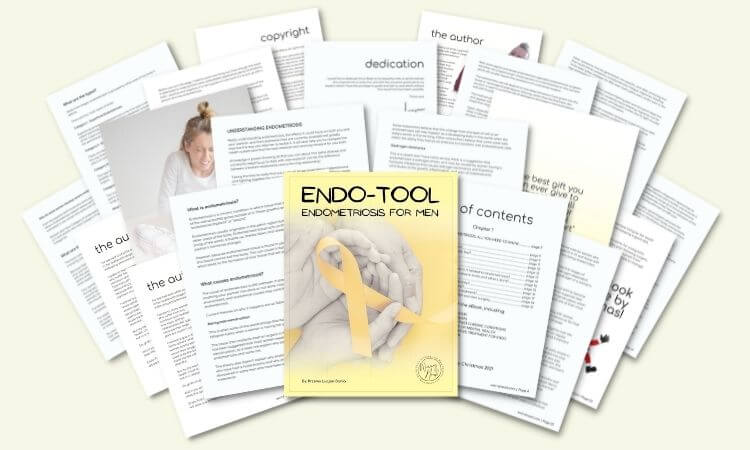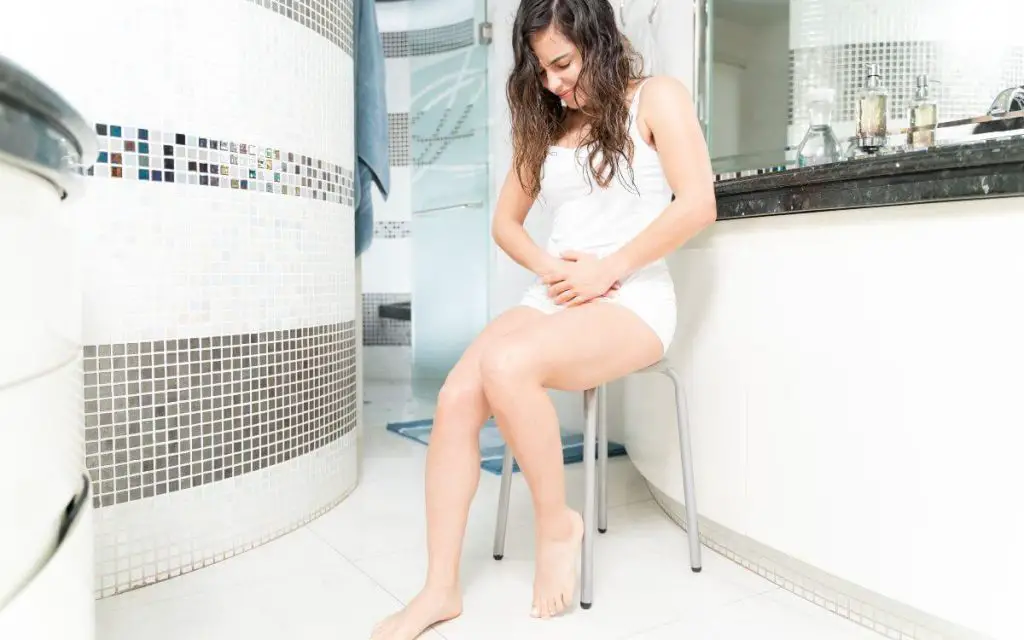What are the symptoms of endometriosis?
Being a man who at the beginning I didn’t know how to spell “endometriosis”, let alone understand it, but further, along my journey of discovery, I found myself wondering what are the symptoms of endometriosis apart from pelvic pain.
Endometriosis can cause a variety of symptoms, which can differ from woman to woman. The most common symptom of endometriosis is pelvic pain, which can be mild to severe. There are also other symptoms of endometriosis such as:
- Painful periods (dysmenorrhea)
- Pain with sex
- Pelvic pain during or after urination or bowel movements
- Excessive bleeding during periods (menorrhagia)
- Infertility
- Fatigue
But this was never enough for me. My wife has stage IV deep infiltrating endometriosis, and that complicates things a little because endometriosis has types and stages, therefore symptoms will differ. So, I decided to ask some questions to my wife’s endometriosis specialist and list all the symptoms of endometriosis that I have found in my research to date.
The list of symptoms below is not exhaustive, but it’s a list of the most common symptoms of endometriosis that I have found.
What is endometriosis?
To answer what is endometriosis, we first need to understand what endometrium is.
The endometrium is the lining of the uterus, and every month it thickens to prepare for pregnancy. If pregnancy does not occur, the endometrium is shed during menstruation.
Endometriosis is a condition in which the endometrium-like tissue grows outside of the uterus, and it can grow on any organ in the pelvic region including the ovaries, fallopian tubes, bladder, and rectum. This tissue responds to the menstrual cycle in the same way as the endometrium in the uterus, meaning that it thickens and bleeds each month.
However, because this endometrium-like tissue is growing outside of the uterus, the blood has nowhere to go and it becomes trapped. This can cause inflammation, pain, and the formation of scar tissue.
Endometriosis is a chronic condition that can worsen over time, and it is thought to affect around 10% of women of childbearing age.
If you want to learn more about endometriosis, I wrote an “Endo-Tool, Endometriosis for Men” e-Book of which you can get a FREE 1st chapter containing all you need to know about this chronic condition, plus how to cope and support your partner.
- What is endometriosis?
- What are the symptoms?
- What causes endometriosis?
- What does endometriosis look like?
- What are the stages?
- What are the types?
- What is adenomyosis and how is it related to endometriosis?
- Why do some women develop severe endo and others don’t?
- Does endometriosis cause infertility?
- How is endometriosis diagnosed?
- Do types and stages affect the treatment?
- Recurrence of endometriosis after excision surgery.
FREE Chapter of “Endo-Tool”
Endometriosis e-Book for Men

What are the symptoms of endometriosis?
Symptoms vary from woman to woman and change over time. Some women have no symptoms, while others have debilitating pain. Endometriosis can also cause emotional stress due to chronic pain and potential fertility problems.
If you are experiencing any of these symptoms, please see your doctor for a diagnosis.
Even though there is no one test that can diagnose endometriosis, it is typically made based on symptoms, a pelvic exam, and imaging tests such as ultrasounds or MRI.
Lastly, the most accurate test – laparoscopy, a surgical procedure in which a small camera is inserted into the abdomen through a small incision, is the gold standard for diagnosing endometriosis.
This type of surgery is also used to stage the disease, which is classified from mild to severe depending on the size, number, and location of endometriosis lesions, as well as the presence of scar tissue or adhesions.
And there are different types and stages, so before I show you my list of symptoms of endometriosis, it would be only wise of me to tell you about the types and stages because depending on the results, the symptoms of endometriosis differ from person to person.
Let’s take a look!
Types of endometriosis.
There are four main types of endometriosis:
- Superficial – the peritoneum is a thin membrane that lines your abdomen and pelvis.
- Endometriomas – cysts filled with dark fluid, mostly blood.
- Deeply infiltrating endometriosis – penetrating deeper than 5mm below the peritoneal surface.
- Abdominal wall endometriosis – intramuscular.
Stages of endometriosis.
There are four stages of endometriosis:
- Stage 1 – minimal. There’s little to no scar tissue.
- Stage 2 – mild. There are more implants than in stage one. They’re also deeper in the tissue.
- Stage 3 – moderate. There are many deep implants. There also may be small cysts on one or both ovaries, and scar tissue called adhesions.
- Stage 4 – severe. This is widespread. There are many deep implants and thick adhesions. There are also large cysts on one or both ovaries.
My wife has stage IV deeply infiltrative endometriosis. That means she has the worst type and stage of it, and her symptoms are debilitating. Now it is time to list them.
Below, I listed 40 symptoms of endometriosis…

A list of 40 symptoms of endometriosis:
- Chronic pelvic pain
- Lower back pain
- Dyspareunia (painful intercourse)
- Discomfort during intercourse
- A feeling of fullness in the pelvis
- Painful urination
- (Dysuria) Burning with urination
- Abnormal uterine bleeding
- Painful bowel movements
- Rectal bleeding
- Intestinal pain
- Constipation
- Diarrhea
- Bloating (endo-belly)
- Excessive gas
- Fatigue
- Infertility
- Recurrent miscarriages
- Endometriomas (cysts on the ovaries)
- Pelvic adhesions
- Obstruction of fallopian tubes
- Anemia
- Mood swings
- Anxiety
- Depression
- Insomnia
- Headaches and migraines
- Dizziness
- Fainting
- Nausea and vomiting
- Joint pain and stiffness
- Muscle pain and weakness
- Rashes
- (Interstitial) Cystitis or bladder pain
- (Vulvodynia) Vulvar pain
- Itching
- Burning
- Dryness
- Inflammation (swelling)
- Numbness or tingling in the legs
What are the treatments for endometriosis?
There is no cure for endometriosis, but there are treatments that can help relieve symptoms and improve quality of life.
Treatment options include:
- Pain medication
- Hormone therapy
- Anti-inflammatory medication
- Birth control pills
- Progestin-only contraceptives
- Gonadotropin-releasing hormone (GnRH) analogs
- Aromatase inhibitors
- Danazol
- Surgical removal of endometriosis lesions
- Laparoscopic surgery
- Robotic surgery
- Abdominal surgery (laparotomy)
- Hysterectomy
- Oophorectomy (removal of the ovaries)
- Myomectomy (removal of uterine fibroids)
- Targeted drug therapy
Depending on the symptoms of endometriosis, the severity of the condition, and whether or not a woman desires pregnancy in the future, different treatment options may be recommended.
Most common symptoms of endometriosis.
The most common symptoms of endometriosis women tend to experience are:
- Chronic pelvic pain – this is the most common symptom, experienced by up to 80% of women with endometriosis. Pelvic pain is defined as pain in the lower abdomen that is not related to your menstrual cycle.
- Dysmenorrhea – this is painful menstrual cramping that is so severe it interferes with your daily activities.
- Painful intercourse – this is deep pain during or after sexual intercourse. It can be caused by endometriosis lesions in the pelvis or scar tissue (adhesions) attaching organs to each other.
- Infertility – endometriosis is a leading cause of infertility, estimated to affect 30-50% of women with the condition.
If you are experiencing any of these symptoms, especially chronic pelvic pain, it is important to talk to your doctor.
Endometriosis can only be diagnosed in 100% through a laparoscopy, so bear that in mind and don’t fall for myths like only women with pain have it, or that pregnancy or hysterectomy cures it.
There is no cure. Pregnancy only temporarily halts symptoms for most, but not all women. Hysterectomy doesn’t cure endo, it might help some women, but endometriosis can grow back and recur, even after a hysterectomy. The best way to manage endometriosis is through a combination of medication, diet, stress avoidance, and as always, surgery if necessary.
Endometriosis can present itself in many different ways, so don’t hesitate to get checked out by a professional.
Take care!
FREE Chapter of “Endo-Tool”
Endometriosis e-Book for Men



About Me
Hi, I’m Lucjan! The reason why I decided to create this blog was my beautiful wife, who experienced a lot of pain in life, but also the lack of information about endometriosis and fibromyalgia for men…
